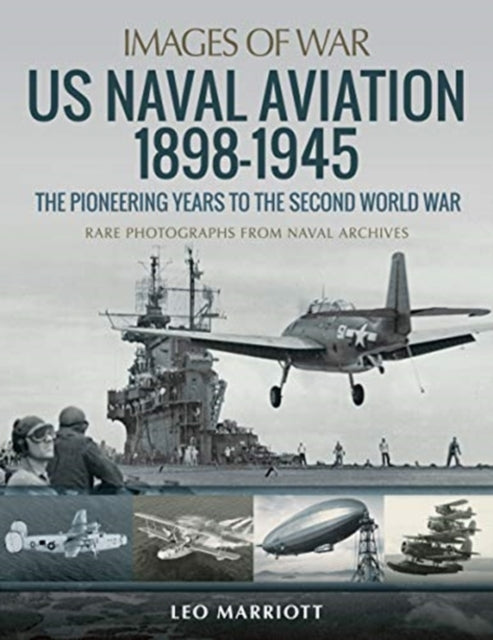Images of War: US Naval Aviation 1898-1945: The Pioneering Years to the Second World War
Usually shipped within 24 hours
UK deliveries from £5.95
Delivery & Returns
Delivery & Returns
We use the Royal Mail, DHL Express or UPS for our customers. For UK addresses, deliveries under 10kg are a standard £4.95 via Royal Mail Tracked 48 Service. For orders over 10kg and overseas customers, postage is calculated for you at checkout once you have entered your postal address. This price, does not include any potential custom charges that may apply, depending on the product or destination, as every country has very different import duties / taxes. Online exclusive products (such as trainers) will be delivered to you directly from the printer, separate from other items in your order, but your postage fee covers ALL items in your order.
If you are unhappy with your purchase, please email shop@tankmuseum.org within fourteen (14) working days of receiving your goods, and return it to us at the address below, in its original condition, unopened (with any seals and shrink-wrap intact) and we will issue you a full refund or replace it. Goods must be returned at your own cost. If the item is faulty, you do not need to return it, we will send you a replacement free of charge.
Description
Description
By Leo Marriott
The Japanese attack on Pearl Harbor on 7 December 1941 sank or crippled almost all of the battleships belonging to the US Navy's Pacific Fleet, but the fleet's aircraft carriers survived to demonstrate that naval aviation was now the dominant factor in the struggle at sea, turning the tide of the Pacific War. That the US Navy had the necessary ships, aircraft and crews was the result of pioneering, far-sighted decisions made in the pre-war years.
Before the First World War the navy had recognised the potential of aircraft at sea, and it went on to develop the techniques and equipment that contributed so much to the defeat of the Japanese.
This is the fascinating story Leo Marriott tells in this photographic history. In a selection of over 200 rare photographs he traces the growth of US naval aviation from the flimsy seaplanes of the first years of the twentieth century to the mighty armadas that challenged those of the Japanese and, after the carrier battles at Coral Sea and Midway, led the advance across the Pacific. Key aspects of the history are the navy's first aircraft carriers of the 1920s and the tremendous progress made in the decades between the wars in tactics and strategy as well as in the design of ships and aircraft.
Paperback
![Images of War: US Naval Aviation 1898-1945: The Pioneering Years to the Second World War Book [variant_option4]](http://tankmuseumshop.org/cdn/shop/files/9781526785398.jpg?v=1748336330&width=1214)

![Images of War: US Naval Aviation 1898-1945: The Pioneering Years to the Second World War Book [variant_option4]](http://tankmuseumshop.org/cdn/shop/files/9781526785398.jpg?v=1748336330&width=88)
![Tank Museum Playing Cards Game [variant_option4]](http://tankmuseumshop.org/cdn/shop/files/ProductShoot_10_10_2025035.jpg?v=1760358498&width=176)
![Tank Museum Wrapping Paper - Two sheet pack Wrapping Paper [variant_option4]](http://tankmuseumshop.org/cdn/shop/products/Wrapp_Paper_All.jpg?v=1748337915&width=176)
![Images of War: US Naval Aviation 1898-1945: The Pioneering Years to the Second World War Book [variant_option4]](http://tankmuseumshop.org/cdn/shop/files/9781526785398.jpg?v=1748336330&width=640)



